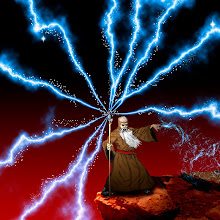The very first maps, probably drawn in the dirt with sticks, had a purpose. They showed where the game was for hunting, the easiest pass over the mountain, or the villages that were friendly or not. As we use maps today, the first thing we do, at least sub-consciously, is ask “what’s this thing telling me?” With a reference map, that’s usually easy enough. A good road map will get you through the city, a topographic map through the wilds. But what about those travesties of lines and points, type and symbols, that make no sense at all? We’ve all seen them; maps that are not! The problem is, they don’t have a purpose in life. Or maybe too many purposes! As cartographers, we should never forget to be users. Always ask; “What am I making this map for?” This becomes even more important with thematic maps, when we are trying to show more than just the lay of the land.
Occasionally, I run across a map that’s over my head. Say a map of the elementary particles in Physics. That’s not a problem of purpose, but one of audience. That map wasn’t made for me, it was made for Dr. Electron. So as cartographers, we have to keep that in mind as well. “Who am I making this map for?” Whether it’s for geniuses or layman, we have to play favorites right up front. Personally, I prefer a target audience; making a map for everyone is harder than one would think!
So the first step in map design is to define a purpose and audience. Why? Because it’s also the first step in map reading. Luckly, we have the tools to get the job done. We can lead the user with the title, legend, colors, symbols, hierarchy, and yes, even the font. The map is the stage, the elements are the actors; use them to tell the right story to the right crowd!
For fun, I like to go to a cool website like Strange Maps, and find one that catches my eye. Then, before reading the description or comments, I try to figure out the purpose and audience. What techniques were used to draw it? What elements did they use to tell me what? Were they successful? What would I do differently? Then I read further to see if I was even close. I believe that to be a good cartographer, you have to be critical of maps. You can learn a lot from details, and if nothing else, it’s a break from Facebook!
Occasionally, I run across a map that’s over my head. Say a map of the elementary particles in Physics. That’s not a problem of purpose, but one of audience. That map wasn’t made for me, it was made for Dr. Electron. So as cartographers, we have to keep that in mind as well. “Who am I making this map for?” Whether it’s for geniuses or layman, we have to play favorites right up front. Personally, I prefer a target audience; making a map for everyone is harder than one would think!
So the first step in map design is to define a purpose and audience. Why? Because it’s also the first step in map reading. Luckly, we have the tools to get the job done. We can lead the user with the title, legend, colors, symbols, hierarchy, and yes, even the font. The map is the stage, the elements are the actors; use them to tell the right story to the right crowd!
For fun, I like to go to a cool website like Strange Maps, and find one that catches my eye. Then, before reading the description or comments, I try to figure out the purpose and audience. What techniques were used to draw it? What elements did they use to tell me what? Were they successful? What would I do differently? Then I read further to see if I was even close. I believe that to be a good cartographer, you have to be critical of maps. You can learn a lot from details, and if nothing else, it’s a break from Facebook!


No comments:
Post a Comment